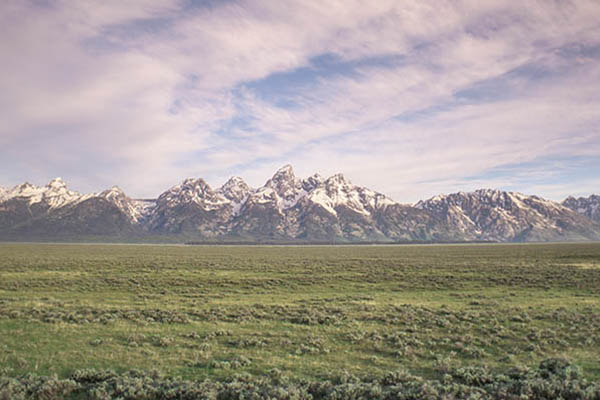
Park wildlife are responding to mid-winter’s cold and snow like they always do—using a variety of adaptations and strategies that help maximize their chances of survival.
• As winter progresses, hibernating animals, such as yellow-bellied marmots, Uinta ground squirrels, black and grizzly bears, and others, benefit from a deeper snowpack, which provides better insulation.
• Bison use their massive heads, thick skin, and muscular necks to move snow from side to side, creating craters where they can access buried forage.
• As days gradually lengthen, ravens, bald eagles, and great horned owls—some of the area’s earliest nesters—begin courtship activities. Breeding early give these species easy access to nest sites and offspring a long season to learn to provide for themselves before their first winter sets in.
• Wolverines, Canada lynx, and wolves remain highly active during winter, using large, snow-adapted feet to move through the environment. Wolf packs will often travel single file through the snow, with each individual stepping in the same foot print to make traveling easier and conserve energy.
• As snow depths increase, moose use their long legs to move through deep snow to areas of preferred forage. Moose calves remain with their mothers through the winter and follow closely behind as mom breaks trail through the snow. Moose also use their highly developed sense of smell to find only the most nutritious parts of shrubs under the snow.
• Moose have begun congregating in areas where bitterbrush—a preferred winter food—is abundant, such as the sagebrush flats near the Jackson Hole Airport and north of the town of Kelly.
• The American dipper, also known as the water ouzel, also remains highly active all winter, seeking areas of open, moving water where they bob on rocks between dives for aquatic insects.
• Our cold water fish are supremely adapted to surviving winter, often under the ice for months at a time. Nevertheless, like other wildlife, winter is stressful for fish. Sport fishing opportunities in the park are limited during winter to help reduce undue stress on fish.
Viewing park wildlife in winter requires appropriate preparation for winter travel, whether that be by vehicle, skis, or snowshoes. But, it can be supremely rewarding. Please keep respectful distances from wildlife during your outings so that your activities do not stress wintering wildlife, and enjoy the stunning surroundings that these hardy animals endure this time of year.









